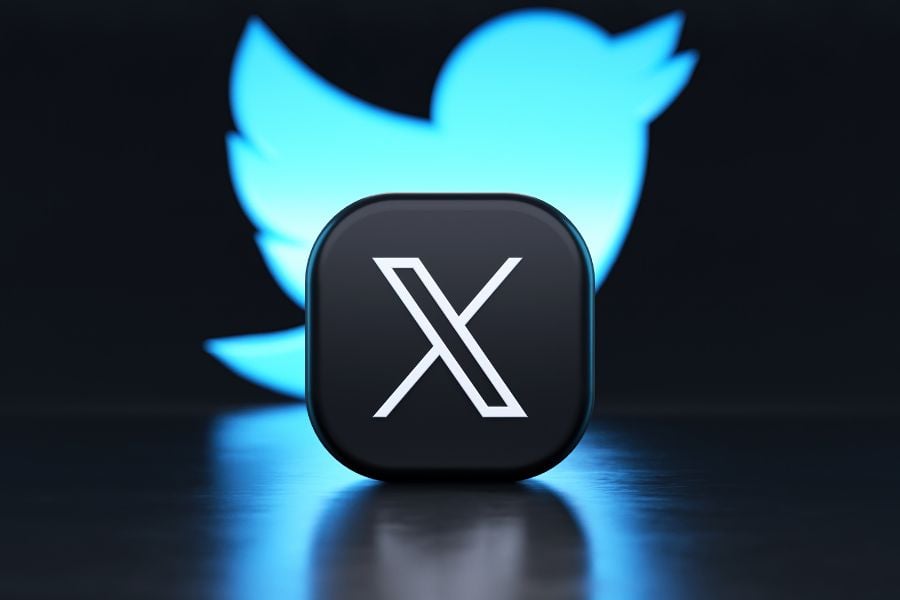Unlike B2C marketing, B2B marketing strategies need to be more targeted.
That’s because B2B buyers:
- Are less prone to impulse buys or marketing gimmicks, like discount codes.
- Do more research before making a purchase decision.
- Often have to go through several rounds of approval from one or more decision-makers at their company.
Below, we’ll share 13 B2B marketing tactics that are sure to connect and convert your target audience.
What is a B2B Marketing Strategy?
B2B marketing strategies are marketing tactics that are aimed at a professional audience.
And that’s a key concept to remember. Even though your product has business applications, you’re not marketing toward a faceless business — you’re targeting real people.
The objective of a B2B marketing strategy is to convince prospects that you understand their needs and that your product or service can address those needs better than any others.
The 13 Best B2B Marketing Strategies & Solutions
The following B2B marketing strategies will make your targets think that your company and product/service were designed specifically for them.
1. Target Accounts With Ideal Customer Profiles

An ideal customer profile (ICP) is a document that defines the qualities of the type of business your product is perfect for. ICPs help you define your targets and focus your B2B marketing strategy on the right types of businesses.
Problem It Solves: Where to Start in B2B
Most businesses sell to multiple market segments that may use their product in different ways. Given that, you need to develop an ICP for each.
Among other things that may be important to your business, an ICP should include company size and revenue, industry, location, and how they use your product (i.e. what problems and goals does it address).
ICPs are the best place to begin when developing a B2B marketing strategy, as they enable you to:
- Disqualify leads that don’t meet your criteria so you can focus more resources on those that do.
- Identify and target your most valuable market segments so you can achieve larger revenue growth.
- Develop buyer personas for the decision-makers at each business.
2. Tailor Personas For a Personal Touch
A B2B persona is a document that defines the professional and personal traits of the decision-makers at your target companies. This includes the person most likely to seek out your product and all the people involved in making the final decision.
Problem It Solves: Lack of Emotion in B2B
There’s a persistent myth that B2B buyers are driven only by logic. But emotions play a critical role in marketing to B2B buyers just as they do for B2C.
The emotions in the B2B buyer journey are likely driven by:
- Higher Stakes: B2B buyers need your product to do their job and earn a living. And making the wrong decision could cost them their job.
- Separation Difficulty: If a B2B buyer makes the wrong decision, switching to another solution can be costly and time-consuming — especially for B2B software.
- Brand Loyalty: According to a study from Google, Gartner, and Motista, B2B buyers are more emotionally attached to brands than B2C.
Your personas should include the emotions that motivate the decision-makers at your target B2B company so you can use those emotions and create a marketing strategy that generates 7x more revenue.
3. Terminate Bottlenecks by Tracking Metrics
B2B metrics measure the results of your B2B digital marketing campaigns, enabling you to determine which marketing goal or strategy produces the best results so you can invest in the top-performers.
Problem It Solves: Poor B2B Marketing Results
The best way to track B2B metrics is by using marketing software that tracks data holistically — i.e. connecting marketing and sales — like HubSpot. Tracking metrics enables you to analyze each marketing strategy you employ so you can identify the top-performers and optimize your campaigns.
While there are many B2B metrics you can track, you should focus on metrics that help you identify the top-performing marketing strategies (so you can invest in them more heavily for greater return) such as:
- Leads by source: Shows which marketing strategy produces the most leads.
- Lead-to-close conversion rate: Shows which marketing strategy produces the most leads that convert.
- Revenue by source: Shows which marketing strategy produces the greatest results.
4. Tackle the C-Suite Carefully

If C-Suite executives are involved in the purchase decision for your product/service, then marketing to them will yield dividends. If not, you’ll just waste time and money. You must determine whether targeting the C-Suite is worthwhile and, if so, how to do it effectively.
Problem It Solves: The B2B C-Suite Deadend
The 3 keys to a successful C-Suite marketing goal are:
1) Determine if it’s right for you: You should market to the C-Suite if:
- You sell to smaller companies: The bigger the company, the less likely executives are to be involved in the purchase decision.
- You sell professional services: Service contracts are long engagements working with other people. Executives may want to be involved to ensure a good fit.
2) Reach them where they are: The best methods for reaching executives include:
- Sharing content in publications and media they already consume.
- Presentations at industry events.
- Network marketing through their C-Suite peers.
3) Show them you understand: You need to tailor your pitch to an executive’s perspective. That means showing them that you understand their needs and demonstrating how your product/service will affect the company’s overall direction and bottom-line.
5. Tap Into Marketing Automation
Marketing automation enables businesses to nurture and convert leads through targeted, automated messages delivered via email, social media, text, and websites. Messages are triggered by actions leads take on your website (or in your SaaS product)
Problem It Solves: Unresponsive or Unengaged B2B Leads
You can use trigger marketing to nurture leads and boost engagement.
The trigger action that a lead takes provides insight into their interests. For example, if a lead downloads an ebook about email marketing, you know that they’re interested in email marketing.
You can develop an automated message series that connects with leads over this interest and demonstrates how you can help them out —e.g., a course that teaches an email marketing strategy. The automation demonstrates the value of your product/service and gets the lead engaged with your offering.
6. Transform Your Database With Segmentation

Database segmentation involves grouping leads into different segments so you can send each group tailored marketing messages.
Problem It Solves: An Ineffective B2B Database
If you’re using the same marketing tactics with all of your B2B leads, you’ll likely find that few, if any, will respond.
Building a database of qualified leads is only half the battle. You still need to deliver marketing messages that they resonate with if you want to nurture and convert them.
You should segment your database into separate groups based on things like needs, goals, company size, etc. By doing so, you can craft marketing messages and tactics that effectively position your product/service in a way that appeals to each group.
7. Take Lead Nurturing Seriously
Nurturing B2B leads is the process of creating content that drives B2B leads through the buyers funnel.
Problem It Solves: Lack of Client Trust
As we said in the intro, B2B buyers generally don’t engage in impulse buys. Before they work with you, you must establish authority, gain their confidence, and build trust.
This is especially true for service businesses because they need to sell potential clients on the prospect of working together over a period of time. Properly nurtured prospects will convert into clients that trust you and are easy to work with.
You can nurture prospects by creating content that:
- Helps them solve their problems.
- Describes the process you’ll use when working together.
- Describes how you helped similar clients achieve great results.
8. Tune Into Your Buyer’s Journey
The Buyer’s Journey is the process leads take from first becoming aware of their problem to seeking out and buying a solution to that problem — usually portrayed as a funnel with Awareness at the top, Consideration in the middle, and Decision at the bottom.
Problem It Solves: Low or Slow Close Rates
If you’re having issues converting prospects, you should analyze your Buyer’s Journey and how you’re marketing to potential B2B customers at each stage.
If your close rates are low, then the Decision stage is the first place you should look. While issues with the other stages could also contribute, you need to have a strong closing process before trying to improve other parts of the journey. Otherwise, all of that effort will be wasted.
If prospects are taking a long time to convert, that can indicate issues at the Awareness and Consideration stages. If you don’t nurture leads well enough here, they may be harder to close when it comes time to make a decision.
9. Tame White Whales With Account Based Marketing (ABM)
Account-based marketing is a strategy where marketing and sales teams work together to identify and target prospects who bring in the most revenue for your business.
Problem It Solves: Lack of High-Value Clients
The account-based marketing approach is based on the 80/20 rule — i.e., 80% of your results come from 20% of your clients.
When you identify the types of clients who bring in the most revenue for your business:
- Your marketing team can create a personalized content strategy that has the greatest chance of attracting these types of leads.
- Your sales team can tailor their pitch to more effectively convert these leads.
- Your customized approach can even attract customers to you through inbound marketing.
By prioritizing high-value B2B leads, you can potentially generate more revenue while doing less work.
10. Translate Your Message Into the Right Language
B2B marketing content can take many forms, including ebooks, blogs, webinars, videos, Q&As, and more. You should communicate your marketing messages in the formats that your audience prefers.
Problem It Solves: Poor Connection with Your B2B Message
Your B2B message can be phenomenal — exactly what your target prospects need to hear. But if it’s not in the right format, then leads won’t be able to connect with it. In fact, they may never even see/hear it.
In the age of social media algorithms and personalization, people have become used to getting what they want how they want it. B2B prospects are no different.
If your marketing messages aren’t in the format that your leads prefer, they’ll ignore you. And even if they don’t, your messages won’t be as potent.
So give yourself the best chance of success by delivering the right message in the right format.
11. Trim Down With Data Cleansing

Data cleansing is eliminating and/or updating information in your B2B lead database to improve its accuracy and quality.
Problem It Solves: Lethargic B2B Metrics
The only thing worse than no data is bad data. Poor data quality affects 40% of leads, and having inaccurate info in your database can hamper the efforts of both sales and marketing teams.
For example, if your email list is full of old, inactive emails, that can lead to a high bounce rate. Email service providers see a high bounce rate as indicative of bad email marketing tactics and content, and will be more likely to send your emails to spam folders. So those inactive emails will harm your marketing efforts with the good emails.
At least once a year, take some time to go through your database and:
- Purge outdated info and contacts.
- Ensure lead data is current and accurate.
12. Trust Content Marketing
B2B content marketing is the tactic of creating marketing content (blogs, ebooks, videos, etc.) that informs and educates your target audience.
Problem It Solves: Lack of Brand Awareness
You can’t just expect your prospects to know or seek out your brand. You need to find them where they are and let them know what you have to offer.
Leads may not be searching for your brand, but they are searching for solutions to their problems. And by creating content that teaches them how to solve those problems and achieve their goals, you can attract them to your website and create brand awareness.
13. Tune Your Social Media to Your Target Audience
Like content marketing, B2B social media marketing involves creating and sharing content online. However, social media marketing also enables other tactics, like B2B influencer marketing and engaging with prospects directly.
Problem It Solves: Lack of Brand Visibility
Social media enables B2B brands to increase their online presence so prospects can find them more easily.
To reach your targets on social media, you need to learn where they hang out – i.e., which social media platforms they use, which hashtags they use, and what other social accounts they follow.
Once you know where your targets are, you can engage them by:
- Sharing digital marketing content on the platforms and hashtags they’re using.
- Partner with other brands they follow so you both benefit from each other’s social media audiences.
- Engaging with targets directly by searching for discussions that are occurring in/about your niche and engaging with people’s social posts.
Ignite Your Business With These B2B Marketing Strategies
You’re now an expert B2B marketer. Employing any one of the B2B marketing plans or strategies above will be enough to drive great results for your business.
But you should start by reviewing the list, selecting a few most appealing tactics, and doing deeper research about how to execute that effective B2B marketing strategy.
Then create a plan, execute it, and watch your business ignite!






Targeting is where everything begins. Without it, you’re in trouble. But if you target your campaign to find the ideal customer all else falls into place more seamlessly. That’s the trick. Excellent, comprehensive blog post here. Keep up the great work.